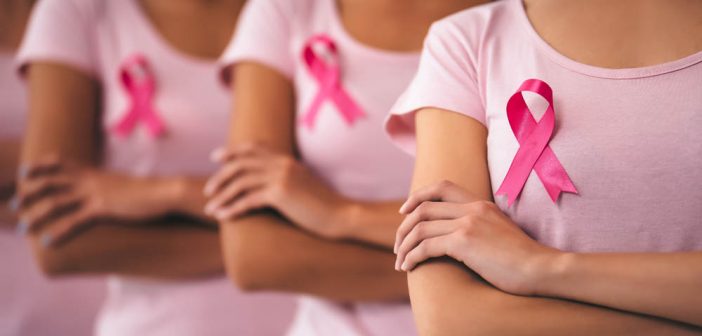In the United States, there are more than 3.1 million survivors of breast cancer, including both women who have fully undergone treatment and those who are still undergoing treatment. While men can develop breast cancer, it is much less common; it is the second most common cancer in women within this country. Survival rates of breast cancer continue to climb due to increased screenings and early detection, making treatment much easier.
What is Breast Cancer?
This disease occurs when cells are dividing and growing without the normal control. It is the growth of these malignant, or cancer, cells that cause various problems. DCIS, or ductal carcinoma in situ, occurs when those abnormal cells have grown inside the milk ducts without spreading to tissue that lies nearby. This is form is considered a non-invasive breast cancer.
On the other hand, breast cancer that is invasive occurs when the cancer cells spread to other parts of the body, even when it is limited to nearby tissue. When invasive breast cancer spreads beyond breast tissue and nearby lymph nodes, moving on to other parts of the body, it is known as metastatic breast cancer.
Warning Signs in Women
Due to mammography screening becoming a more regular process, most breast cancers are found at early stages, even before warning signs are visible. Breast cancers are not all found through mammography however, and the warning can signs differ among women. Most common are a change in the feel or look of the breast, a change in the feel or look of the nipple, and nipple discharge.
One complication is that many women find that their breasts are lumpy. Breast tissue has a naturally bumpy texture, but some women find more lumpiness than others in their breasts. Generally, this is no reason to worry. If the breasts both have lumps throughout, it is likely normal tissue. However, lumps that feel different from the overall breast, or the other breast, should be checked. This includes harder/larger lumps.
Nipple discharge can be troubling; it seldom, however, indicates breast cancer. Discharge can be a natural reaction to the squeezing of the nipple. It is more likely breast cancer if the discharge occurs when the nipple is not squeezed, if it only occurs in one breast, or if it is clear or bloody, rather than being milky.
Warning Signs in Men
Generally, the most common sign of male breast cancer is a thickening or painless lump in the chest area. Any change in the nipple or breast, however, can be a warning sign of male breast cancer. These include hard knots, lumps, or thickenings in the chest, breast, or underarm area. It is usually one that is painless but can also be tender.
Another sign is a change in the shape or size of the breast. An itchy rash or scaly sore on the nipple can be an indicator, as can an inverted nipple or dimpling redness, or puckering of breast skin. Much more rare is nipple discharge.
Breast Cancer Statistics
In 2019, it is estimated that the number of new cases of breast cancer that is invasive will be 268,000; for non-invasive breast cancer, the estimate is 62,930 new cases. Roughly 2,670 men will receive the diagnosis of breast cancer in the United States. An estimated 41,760 women will have breast cancer as their cause of death, and for men, the estimate is 500. One in eight women within the United States will, in her lifetime, develop breast cancer.
Risk Factors for Breast Cancer
Breast cancer’s leading risk factor is simply being female. The disease is 100 times more prevalent among females than males. Most women, about 80%, who develop breast cancer have no family history of it. Women with close blood relatives who have experienced it do have a higher risk of breast cancer; having a mother, sister, or daughter with the disease nearly doubles your risk.
Another risk factor includes aging. As people get older, their risk goes up; most breast cancers found are in women older than 55 years of age. Obesity is also a known risk factor concerning breast cancer. This is because fat cells carry estrogen. The more fat cells in the body, the more estrogen is present. Women with high exposure to estrogen over their lifetimes may have an increased risk of breast cancer.
Self-Exams
Regular breast self-exams are important; experts suggest once a month for best effect. About 40% of diagnosed cancers of the breast are found by women who feel lumps, so following this schedule is quite important and could be life-saving. Mammograms can assist by finding cancer before a lump is felt, but self-exams help women to be familiar with the normal look and feel of their breasts so that healthcare professionals can be contacted if changes occur.
A self-exam can easily be performed in the shower. With the pads of the fingers, move around your entire breast in a pattern that is circular, moving from the outside and inward toward the center, checking both breast and armpit area. Feel for thickening, hardened knots, or lumps.
Use a mirror to visually inspect each breast with the arms at the sides. Then raise your arms high overhead. With your arms up, look for changes in contour, dimpling of the skin, swelling, or changes in the nipples. Then rest your palms on your hips and flex your chest muscles. Look for dimpling, changes, or puckering. Do not worry about mismatched breasts; very few women have identical breasts.
The numbers are not all bleak. For example, 62% of cases of breast cancer are diagnosed at a stage when the cancer is localized, for which there is a 99% 5-year survival rate. In the United States, there are greater than three and a half million survivors of breast cancer. In recent years, there has been a gradual reduction of victims of female breast cancer in women aged 50 and greater. Death rates have been declining since 1990.








